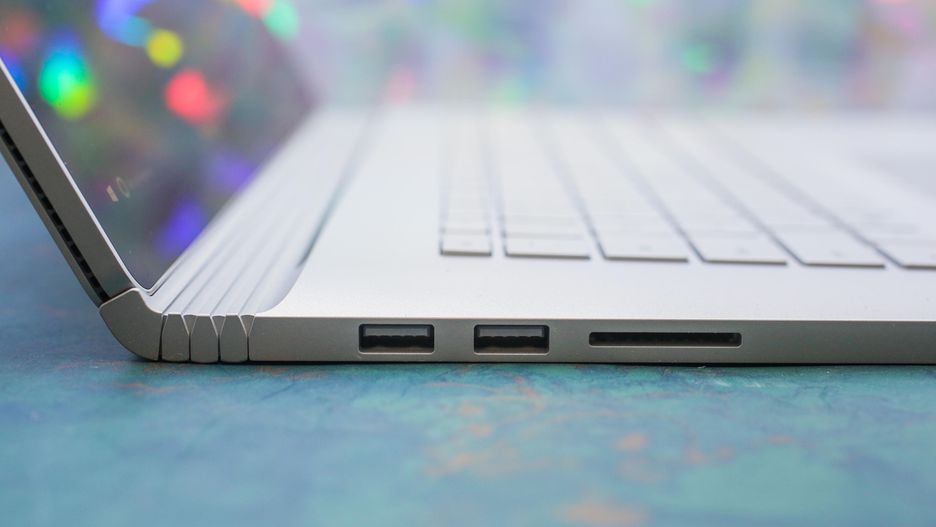

I’ve been writing the Surface Book 2 review on the Surface Book 2’s excellent keyboard. I’m certain I could’ve done much better in battery-saver mode, but, regardless, your mileage will surely vary. Over the course of two days, myriad tasks, setting brightness to max and not letting the screen timeout, I got roughly 12. Microsoft claims 17-hours of battery life (using the batteries in the base and display). I’m pleased to report that across mundane browser tasks, intense Photoshop work, insanely big spreadsheets and entertaining PC gaming operations, the Surface Book 2 didn’t miss a beat. What matters is how the Surface Book 2 performs the myriad heavy-lift tasks required by modern knowledge workers. In a vacuum, however, these numbers mean nothing. And when I pulled away the 15-inch display, I noticed that, while the trio of digital connectors looked unchanged, the magnets that hold the screen in place are somewhat smaller than those on the original Surface Book. There’s a somewhat different and slightly quieter detach click when you hit the Surface Book 2’s detach button on the keyboard. Changes are only evident when you detach the screen. Panay told me the hinge is completely redesigned, but it looks and works the same as before. The front facing camera resolution (5 MP) is unchanged, but now Microsoft hides it and the IR camera (for Windows Hello facial recognition) behind a darker black screen frame. Microsoft got rid of the chamfered edge, which basically gives the Clipboard a cleaner look. The screen looks similar, but in addition to a higher resolution 3240 x 2160 (versus 3000 x 2000 on the Surface Book 2 13), the frame that surrounds it is a tad sleeker. The new Surface Book 2 15-inch (left) next to the 13.5-inch Performance Base model. The channel that surrounded the original keyboard, nesting it slightly more deeply in the chassis, is gone. For example, even though the keyboard is the exact same size on the Surface Book 2 15-inch, it now sits on a relatively flat plane.

The closer I looked, though, the more I saw evidence of the 1,000-part changes Microsoft Windows Device Lead Panos Panay told me about in October. You can still detach the screen with the press of a button and signature the dynamic fulcrum hinge that connects the base and screen looks and feels unchanged. Microsoft puts the CPU in the “Clipboard” PixelSense touch screen and the discrete graphics in the base. It has the same magnesium body and similarly designed keyboard and mouse.īroadly, the component design is the same.

At a glance and aside from the size, it’s indistinguishable from the Surface Book with Performance Base I have in my office. The Surface Book 2 (opens in a new tab) is not a reinvention of the original Surface Book.


 0 kommentar(er)
0 kommentar(er)
